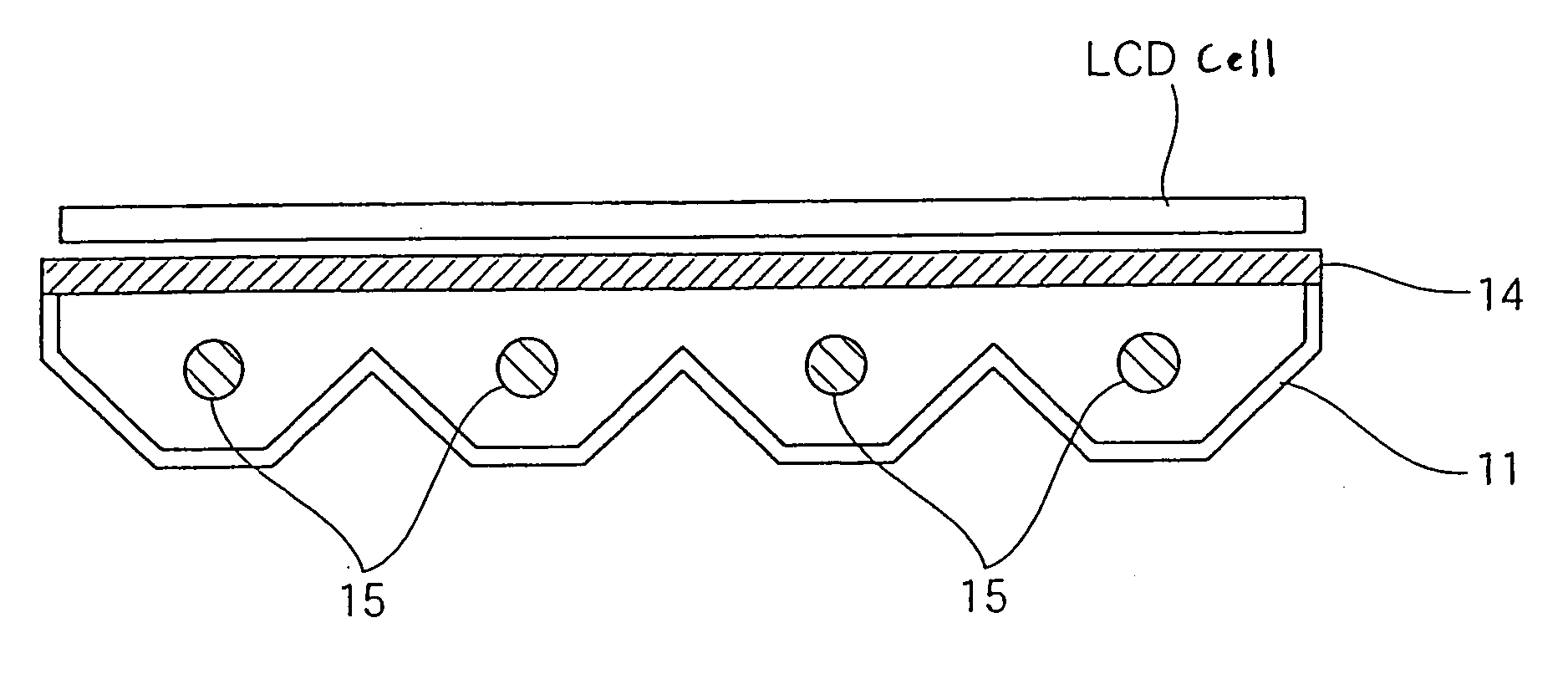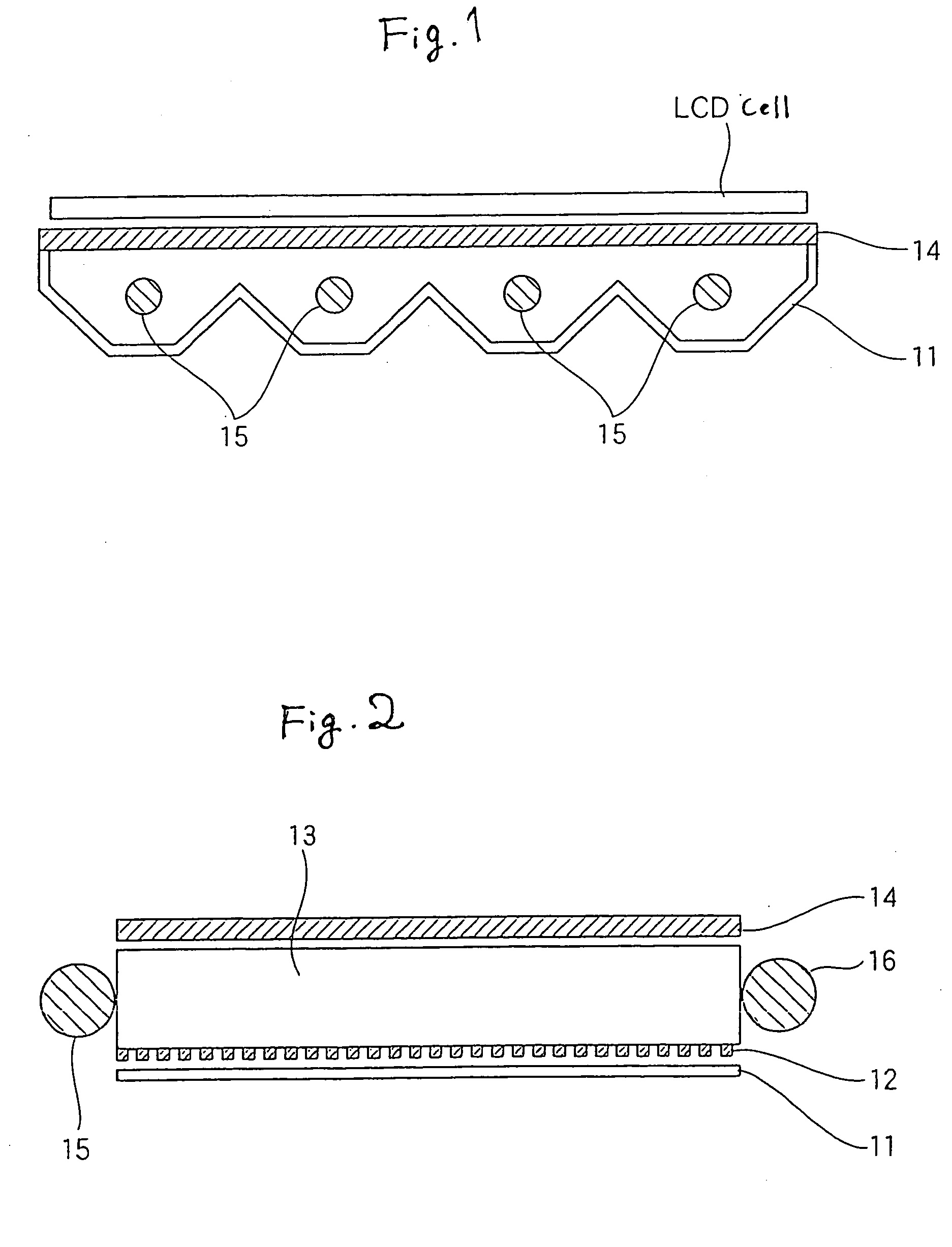Light reflector
a light reflector and reflector technology, applied in the field of light reflectors, can solve the problems of reflector yellowing, illuminance drop after, source yellowing, etc., and achieve the effect of reducing illuminance drop
- Summary
- Abstract
- Description
- Claims
- Application Information
AI Technical Summary
Benefits of technology
Problems solved by technology
Method used
Image
Examples
production example 1
[0130] A composition (a) obtained by mixing PP1 and HDPE as olefin-based resin and barium sulfate and titanium dioxide as filler in a proportion set forth in Table 2 and a composition (g) obtained by mixing PP2 as olefin-based resin and calcium carbonate 1 and titanium dioxide as filler in a proportion set forth in Table 2 were melted and kneaded at 250° C. using one extruder and two separate extruders, respectively.
[0131] These kneaded materials were fed into a co-extrusion die the temperature of which had been set at 250° C. where they were then laminated in such an arrangement that the composition (a) was an interlayer (A) and the composition (g) was laminated on the interlayer (A) as a surface layer (B) and a back layer (C), respectively. Thereafter, the laminate was extruded to form a film which was then cooled over a cooling roll to about 60° C. to obtain an unstretched laminate (B / A / C).
[0132] This laminate was heated to 145° C., stretched by a factor of 8 longitudinally by ...
production example 2
[0133] A composition (b) obtained by mixing PP1 and HDPE as olefin-based resin and barium sulfate and titanium dioxide as filler in a proportion set forth in Table 2 and a composition (i) obtained by mixing PP2 as olefin-based resin and calcium carbonate 2 and titanium dioxide as filler in a proportion set forth in Table 2 were melted and kneaded at 250° C. using separate extruders.
[0134] A monoaxially-stretched three-layer film 1 having a thickness of 100 μm (B / A / C=0.5 μm / 99 μm / 0.5 μm) was obtained in the same manner as in Production Example 1 except that the extrusion rate of these kneaded materials was changed.
production example 3
[0135] A monoaxially-stretched three-layer film 1 having a thickness of 180 μm (B / A / C=0.5 μm / 179 μm / 0.5 μm) was obtained in the same manner as in Production Example 2 except that the extrusion rate of the various compositions was changed.
PUM
| Property | Measurement | Unit |
|---|---|---|
| total ray reflectance | aaaaa | aaaaa |
| foaming ratio | aaaaa | aaaaa |
| porosity | aaaaa | aaaaa |
Abstract
Description
Claims
Application Information
 Login to View More
Login to View More - R&D
- Intellectual Property
- Life Sciences
- Materials
- Tech Scout
- Unparalleled Data Quality
- Higher Quality Content
- 60% Fewer Hallucinations
Browse by: Latest US Patents, China's latest patents, Technical Efficacy Thesaurus, Application Domain, Technology Topic, Popular Technical Reports.
© 2025 PatSnap. All rights reserved.Legal|Privacy policy|Modern Slavery Act Transparency Statement|Sitemap|About US| Contact US: help@patsnap.com


